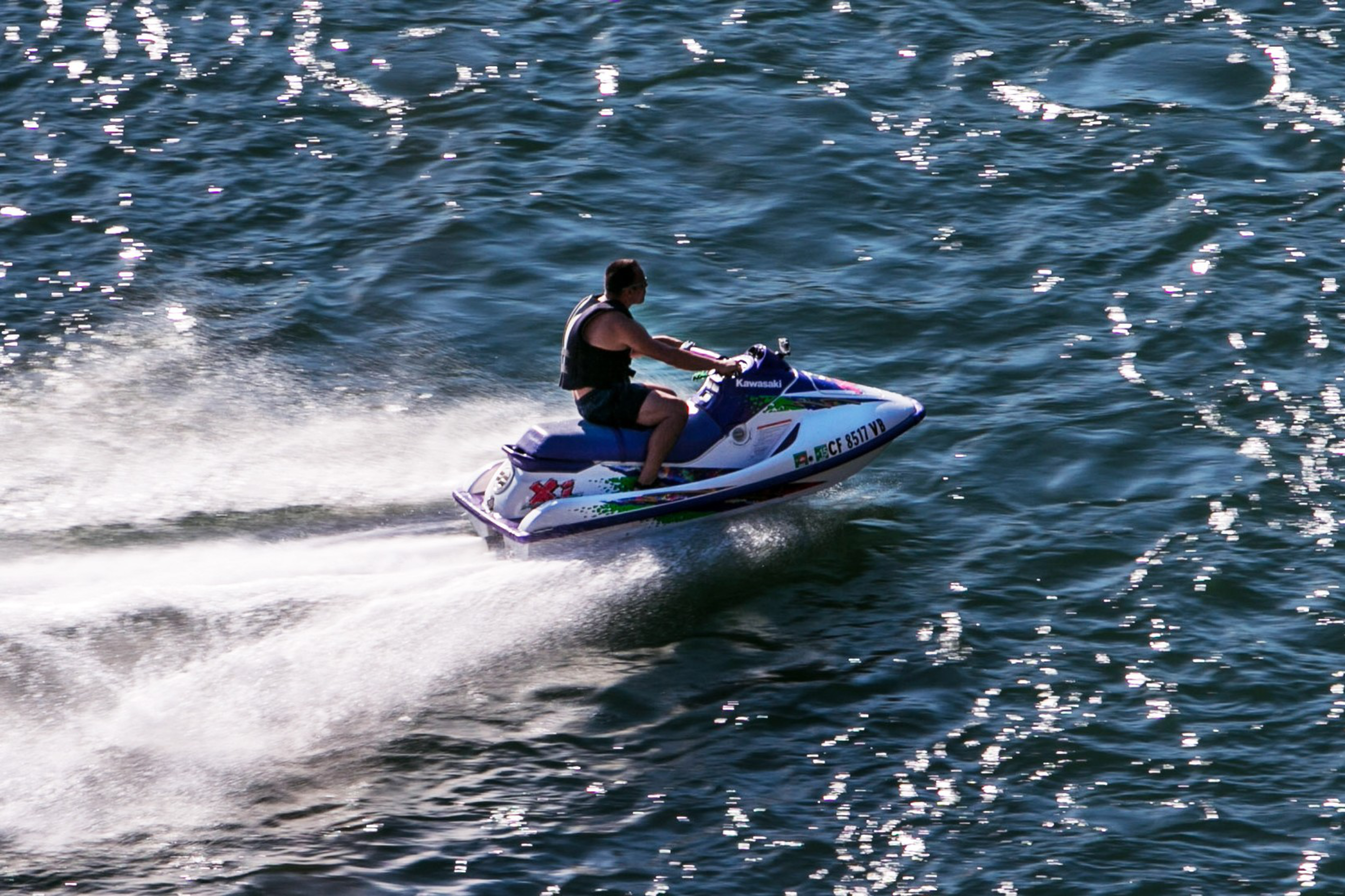The Standard’s Rosalie Tapavalu dives into the latest reader question for Ask The Standard: Why aren’t people allowed to ride Jet Skis around San Francisco’s coast?

Once in a while, if the weather’s fine, fans looking to enjoy a Giants game on the water or partiers out for a thrill will take to motorized personal watercraft—best known by the brand names Jet Skis, Sea-Doos and WaveRunners—for speedy fun along the city’s coast.
But have you ever wondered why you don’t see them more? The Standard dove into the topic to find out why Jet Skis aren’t a common sight.
The bustling bay is full of maritime activities such as shipping, commercial and recreational boating and kayaking—but not “water scooters” as the motorized conveyances are sometimes called. The San Francisco Police Department Marine Unit and the U.S. Coast Guard are responsible for patrolling the waters.
Occasionally the Marine Unit will observe personal watercraft operators along the waterfront and simply advise them of the regulations and required distance away from shore that they need to operate in order to be in compliance, said Sgt. Keith Matthews, who serves on SFPD’s Homeland Security and Marine units.
“The great majority of those contacted responded that they were unaware of the restriction when they launched their craft in the East Bay but are happy to comply by simply moving farther out into the bay as they transit around the city,” Matthews said.
In 1998, the San Francisco Police Code was updated to prohibit personal watercraft within 1,200 feet of the San Francisco shoreline. However, they can launch at the public ramp and then immediately travel out to Bay waters using the access corridor.
Jet Skis, with their high speeds, maneuverability and compact size makes them less visible, increasing the likelihood of collisions. The U.S. Coast Guard reported last year that one of the most common vessel types (opens in new tab) involved in reported incidents were personal watercraft.
Jet Skis can also pose potential risks to the delicate ecosystem of the San Francisco Bay. According to the San Francisco Bay Conservation and Development Commission (BCDC) (opens in new tab), the bay is a thriving habitat for numerous marine species, including endangered ones. The noise, turbulence and exhaust emissions generated by Jet Skis can disrupt their natural behaviors and habitat and contribute to air pollution, ultimately threatening their survival.
San Francisco Bay is also home to numerous neighborhoods along its shores. The noise caused by Jet Skis can disrupt the tranquility enjoyed by residents and visitors alike. Jet Skis can reach speeds upward of 70 mph and emit noise up to 115 decibels.
While Jet Skis are prohibited to the public, there are some exceptions. For rescue efforts or guarding organized swims, the police and fire departments both operate Kawasaki and Sea-Doo models, clearly marked as Rescue Watercraft with attached rescue sleds for transporting people to safety, Matthews said. Personal watercraft are much safer than outboard motor propelled boats for rescuing cold or injured swimmers. They are also ideal for use in very shallow waters, or in confined areas that are difficult to access with typical boats, such as under the numerous piers along the waterfront.
Even though jet skiing around Pier 39 may not be permitted, the bay offers a multitude of alternative water activities that will surely allow you to embrace the splendor of this iconic natural treasure. You can explore the bay’s beauty through sailing, kayaking, paddleboarding, and even kiteboarding.
So, grab a paddle or hoist a sail, and let the wonders of San Francisco Bay unfold before you!
